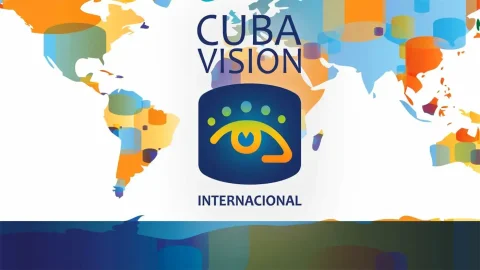The Evolution and Impact of Cuban Television: A Journey Through Time
Cuban television has played a multifaceted role in the country's history, from fostering national identity to serving as a tool of political control. This blog post explores the evolution of Cuban television, its impact on society, and its transition in the digital age, drawing on insights from scholarly research and news reports. Discover how Cuban television has navigated the complexities of resistance, resilience, and adaptation, reflecting the broader socio-political dynamics of the nation.
Category: News
Table of Contents
Cuban television has long been a fascinating subject of study, reflecting the country's broader socio-political dynamics and cultural shifts. From its inception, television in Cuba has navigated the complexities of resistance, resilience, and adaptation, mirroring the nation's tumultuous history and the government's strategic media use. This blog post delves into the historical evolution of Cuban television, its role in society, and its transition into the digital age, drawing on insights from various scholarly articles, news reports, and books.
A History of Resistance and Resilience
Maria Cristina García and George Joseph's seminal work, "Cuban Television: A History of Resistance and Resilience" (Latin American Research Review, 2002), provides a foundational understanding of how Cuban television has evolved amidst political upheaval and economic challenges. The authors highlight the medium's role in fostering a sense of national identity and unity, particularly during the early years of the Cuban Revolution. Television became a crucial tool for the government to disseminate its ideological narratives and mobilize public support.
Pathways to Power and Legitimacy
Cynthia Gollub's "Media in Cuba: Pathways to Power and Legitimacy" (Journal of Communication, 2017) expands on the political dimension of Cuban media. Gollub argues that television in Cuba has been instrumental in consolidating the ruling party's power and legitimacy. Through state-controlled content, the government has maintained a tight grip on the flow of information, shaping public perception and opinion. This strategic use of media has ensured the continuity of the revolutionary ethos and the centralization of power.
The Digital Shift
In recent years, the media landscape in Cuba has undergone significant changes, driven by the rise of digital and social media. Ted Henken's "Cuba's Changing Media Landscape: The Rise of Digital and Social Media" (Journal of Latin American Communication Research, 2018) explores this transition. Henken notes that while traditional television remains influential, digital platforms have started to erode the government's control over information. This shift has opened new avenues for independent journalism and alternative narratives, challenging the monolithic state media.
A Critical Examination of the Cuban Media System
Luis D. Suárez's "The Cuban Media System: A Critical Examination" (International Communication Bulletin, 2019) provides a comprehensive critique of the current state of Cuban media. Suárez emphasizes the need for reforms to foster greater media plurality and freedom of expression. He underscores the importance of creating a more open media environment that can accommodate diverse voices and perspectives, reflecting the evolving aspirations of the Cuban people.
Cubavisión Internacional: Expanding Global Reach
Cubavisión Internacional, Cuba's state-run international television network, has played a pivotal role in projecting the nation's image abroad. The network's expansion to a 24/7 signal, as reported by Broadcasting Cable in 2020, marks a significant milestone in its efforts to reach a global audience. This expansion is part of a broader strategy to counter negative portrayals of Cuba in foreign media and to promote the country's achievements and perspectives on the international stage.
Propaganda or Diplomacy?
The dual role of Cubavisión Internacional as a tool of propaganda and diplomacy is a subject of debate. A 2007 article by Radio Free Europe/Radio Liberty, titled "Cuba's International Television Network: A Tool of Propaganda or Diplomacy?", explores this dichotomy. While critics argue that the network primarily serves as a mouthpiece for the government, supporters contend it provides an alternative viewpoint, challenging the dominant Western media narratives.
Scholarly Perspectives on Latin American Media
The broader context of media in Latin America offers valuable insights into the Cuban experience. Daniel C. Hallin and Paulo Fábio Scliar's "The Media in Latin America: A Comparative Perspective" (2018) and John Sinclair and Silvia J. Chan-Olmsted's "Media, Culture, and Society in Latin America" (2017) provide comparative analyses that highlight the unique characteristics and common challenges faced by media systems across the region. These works underscore the interplay between media, politics, and society, offering a nuanced understanding of how Cuban television fits within the broader Latin American media landscape.
Conclusion
Cuban television's journey from a tool of revolutionary mobilization to a platform navigating the complexities of the digital age encapsulates the broader narrative of the country's resilience and adaptability. As Cuba continues to grapple with internal and external pressures, the evolution of its media landscape will remain a critical area of study, offering insights into the interplay between media, power, and society.
